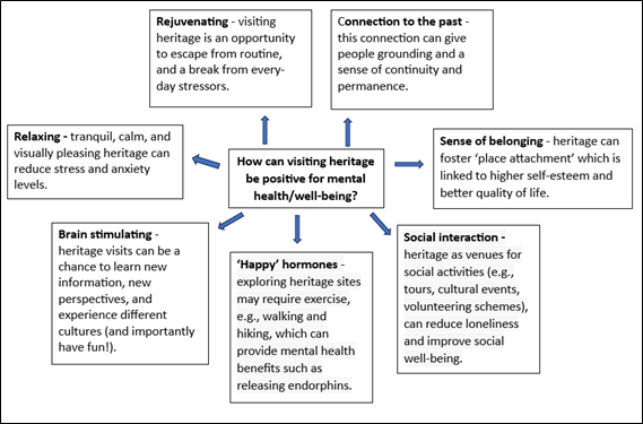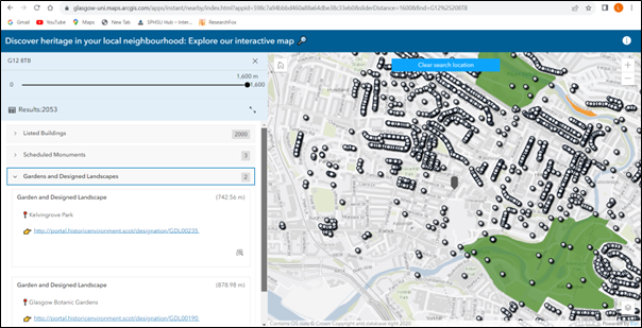Discovering heritage in your local neighbourhood
Published: 8 November 2023
This blog reflects on a heritage and wellbeing public engagement activity developed for the ESRC Festival of Social Science.
By Laura Macdonald, Research Associate with the Places and Health Programme.
A growing evidence base suggests that visiting historical sites, and engaging with heritage, can play a role in enhancing mental health and well-being. By heritage sites we mean protected buildings, structures, or landscapes that are officially recognised for their historical, cultural, or architectural value, for example, a stone circle, prehistoric fort, medieval castle, stately home, designed landscape, church, war memorial etc.
Heritage site designators, and criteria for designation, vary from country to country, and can differ at local, national, and international levels. Local landmarks may be designated by local municipalities and government; national heritage designated by national bodies, while world heritage sites are recognised as internationally important by organisations such as UNESCO.
Festival of Social Science activity
Laura Macdonald, and Laura Diffey-Higgins from Historic Environment Scotland, developed a table-top public engagement activity for the 2023 ESRC Festival of Social Science event, in the Byres Community Hub. The primary objective of the activity was to present a visual representation of mapped heritage sites and explore residents’ awareness of local heritage. The map served as a conversation starter to discuss connections between visiting heritage and the enhancement of mental health and well-being.

Participants were asked to provide their postcodes for an interactive heritage map to discover sites, such as listed buildings, scheduled monuments and designed gardens and landscape, within a 20-minute walk of their home. They were also given the opportunity to learn about the positive impacts on mental health associated with having heritage sites locally and visiting and engaging with heritage. The map shows heritage sites within a 20-minute walk of the University of Glasgow, in Glasgow’s West End.

What did we find?
The activity garnered a positive response with members of the public displaying a keen interest in the heritage sites within their local neighbourhoods. Some participants were surprised by the abundance of local heritage sites, in particular listed buildings, while others had limited awareness of the heritage in their local area.
A survey of participants revealed that:
- 80% were aware of some of the heritage in their local area (but most did not realise the sheer number of sites)
- two-thirds did not know how to find information on local heritage
- two-thirds had visited heritage both locally and further afield in the past year
- only one-third had previously considered or knew of the potential mental health and well-being benefits of visiting heritage
Participants commented that they found the interactive map to be particularly informative and enlightening. They expressed a newfound enthusiasm to seek out and explore heritage in their local area. They discussed specific sites that they were fond of, with one participant acknowledging that visiting heritage brought them happiness. Many expressed a shift in their perspective, having not previously considered the mental health benefits of visiting heritage sites, and expressed interest in finding out further information about potential benefits.
First published: 8 November 2023

